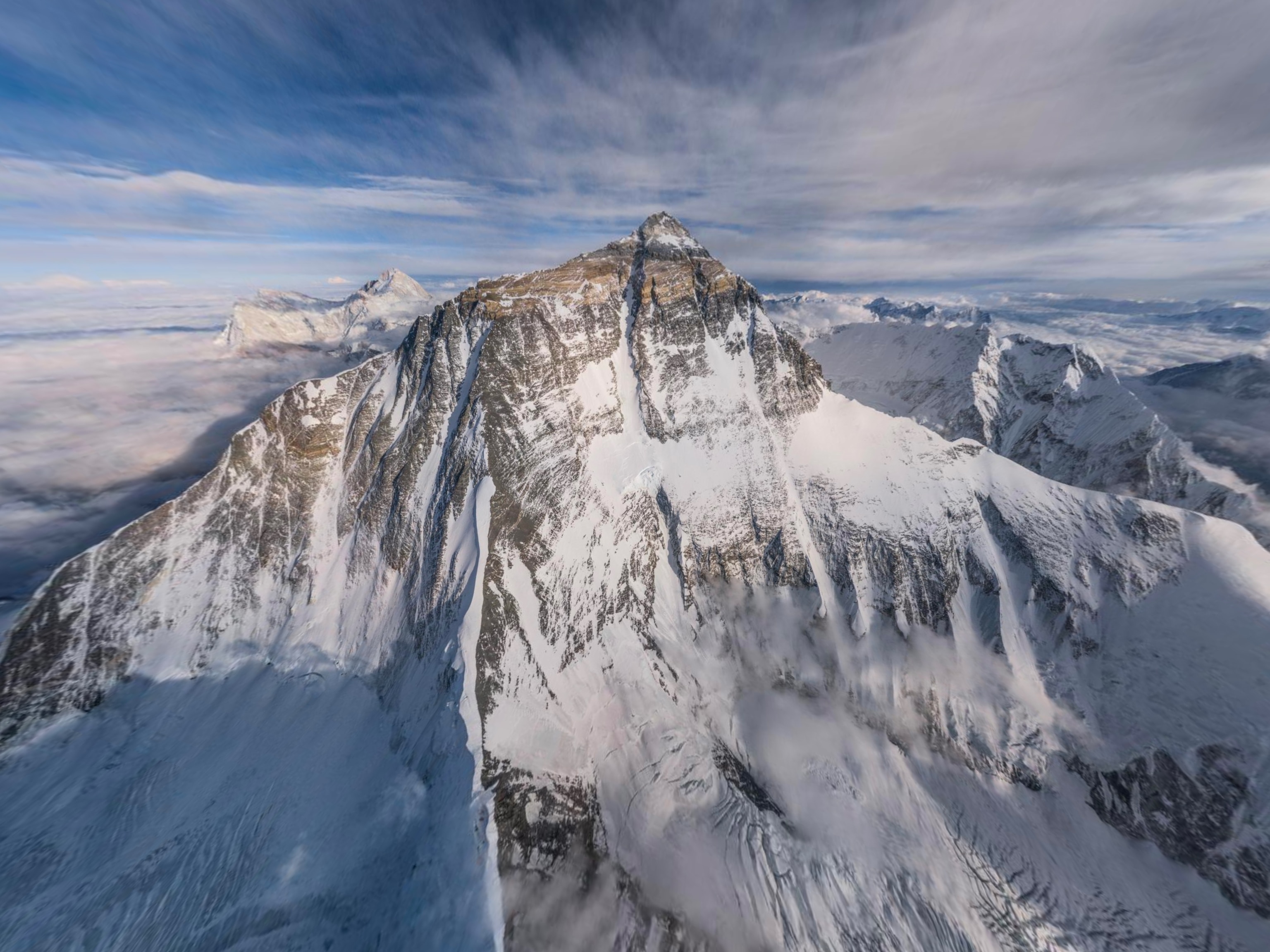
Himalaya ‘ghost cats’ are finally coming into view
Tourists are getting unprecedented glimpses of snow leopards in India as attitudes toward the predators change.
The old snow leopard was well-known in Kibber. It was unclear when he’d claimed the gorges and cliffs around this ancient Himalayan village, but over the past few years, the people here had come to recognize this large male, with a notched left ear, and kept track of him to the extent anyone could. Like all snow leopards, he was part phantom and would shape-shift, dissolving into these mountains like smoke from the village chimneys, dispersing into the cold, thin air.
The old ones are the ones you must watch. When snow leopards are too old to hunt the ibex and blue sheep that live among the limestone crags, they seek easier prey, the village’s goats and sheep, young horses, and yak calves.
(Why Do High-Altitude Snow Leopards Breathe Like Pussycats?)
On a bitterly cold afternoon in February, I crouched on the ice-encrusted rim of a gaping chasm, watching the old snow leopard through binoculars. He drowsed on a ledge on the opposite cliff, its sheer walls plunging nearly a thousand feet to the Spiti River. A veil of snowflakes as fine as eyelashes drifted into the gorge, and occasionally, when I jiggled the binoculars, the cat’s smoky fur with charcoal rosettes would be lost among the creases and shadows. “Crap, I lost him again,” I’d whisper. Prasenjeet would look up from his camera and point, and I’d follow his finger back to where the animal lay.
This was, after all, Prasenjeet’s snow leopard. Some of the local guides even called him that. When we’d heard a cat had been spotted, one of them said, “It’s yours,” tapping his left ear.

For the past two years, photographer Prasenjeet Yadav had tracked this male on foot and with camera traps in this high-altitude corner of northern India’s Spiti Valley. In the coming weeks we’d trek more than 30 miles, descending into canyons, trudging up snow-choked passes, climbing onto icy cliffs. But today—my first day in Kibber, and still woozy from the climb to 14,000 feet—the cat had deigned to appear.
Ever since college, when I’d read Peter Matthiessen’s book The Snow Leopard, I’d fixated on seeing one of these elusive creatures. Maybe because Matthiessen never did. In 1973 he and the legendary biologist George Schaller had spent two months hiking in Nepal and had seen signs of the cats—paw prints, scratch marks, scat—but never glimpsed one. At the time, Schaller was said to be one of only two Westerners who’d seen a wild snow leopard. In 1970 he’d taken what is believed to be the first photograph of a snow leopard in its natural habitat. For more than two decades, it would be the only such image known to exist of this solitary, obscure animal.
So it was profoundly ironic that as I finally was getting to see a snow leopard, the most prominent sound in my ear was the persistent whir of nearly two dozen cameras, capturing hundreds of images of the cat. On the cliff with Prasenjeet and me were tourists from around the world, most hunched over expensive telephoto lenses.
In the past few years, Kibber has become the place to see the cats with any predictability. But the journey is not for the faint of heart. The village is reachable only by a zigzagging, single-track road carved into impossibly steep mountains. And you must go in winter, when the snow leopards follow their prey to lower elevations, which means large stretches of the route are covered in snow and ice.
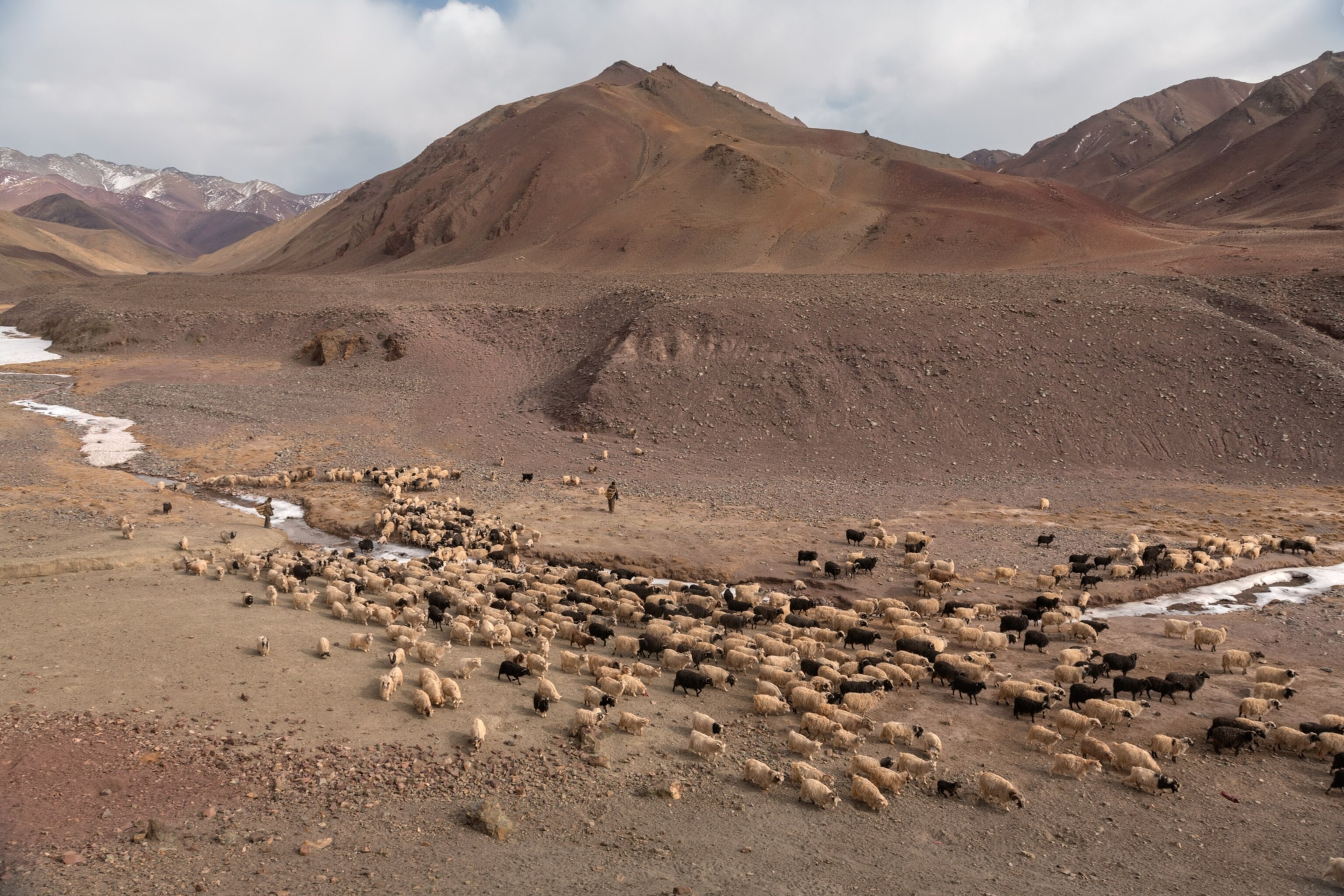
The previous day, as Prasenjeet and I made the drive up, I found myself white-knuckling the door handle as he navigated the icy switchbacks and blind corners. Occasionally we’d see a shower of gravel hit the road ahead, and he’d stop the vehicle and look up the cliff for signs of an avalanche. After a bit, we’d proceed, and I’d grip the door handle tighter.
He explained matter-of-factly that every driver who travels the route with any regularity tells stories of vehicles that had slid off and plummeted to the valley floor or been crushed by falling boulders. Our own journey had been delayed two days when the road was blocked by a landslide. The road department had used dynamite to clear it, only to set off another landslide. “Don’t worry,” he reassured me. “It’s 95 percent safe.”
(See how the elusive snow leopard is adapted to one of Earth’s most extreme environs.)
But all my worries were forgotten as we watched the snow leopard, sweeping his thick spotted tail and surveying his domain. Soon whispers passed down the line of tourists and guides. Three ibexes with their scimitar-shaped horns had appeared on the cliff, about 300 feet from the snow leopard. We watched as the cat caught their scent, tensed, and slowly lifted his head. With unhurried, calculated movements, he climbed the escarpment. Frequently he would pause and remain so still that I’d lose him in the binoculars until he started moving again. “He wants to get above the ibexes to chase them to the edge of the cliff,” Prasenjeet whispered.
After about 20 minutes, with the sun setting and the temperature well below freezing, the cat had closed to within a hundred feet of the ibexes. The whirring of the cameras stopped, and everyone seemed to hold their breath, waiting for the leopard to break into a sprint. But then a sharp whistle broke the silence, and the ibexes spooked. “That’s their warning call,” Prasenjeet said. “One of them must’ve smelled it.” Serenely, the snow leopard descended and disappeared from view.
The shivering tourists beamed at each other, high-fiving gloved hands, and followed their happy guides back to Kibber for heaping plates of dal and rice and steaming cups of chai.
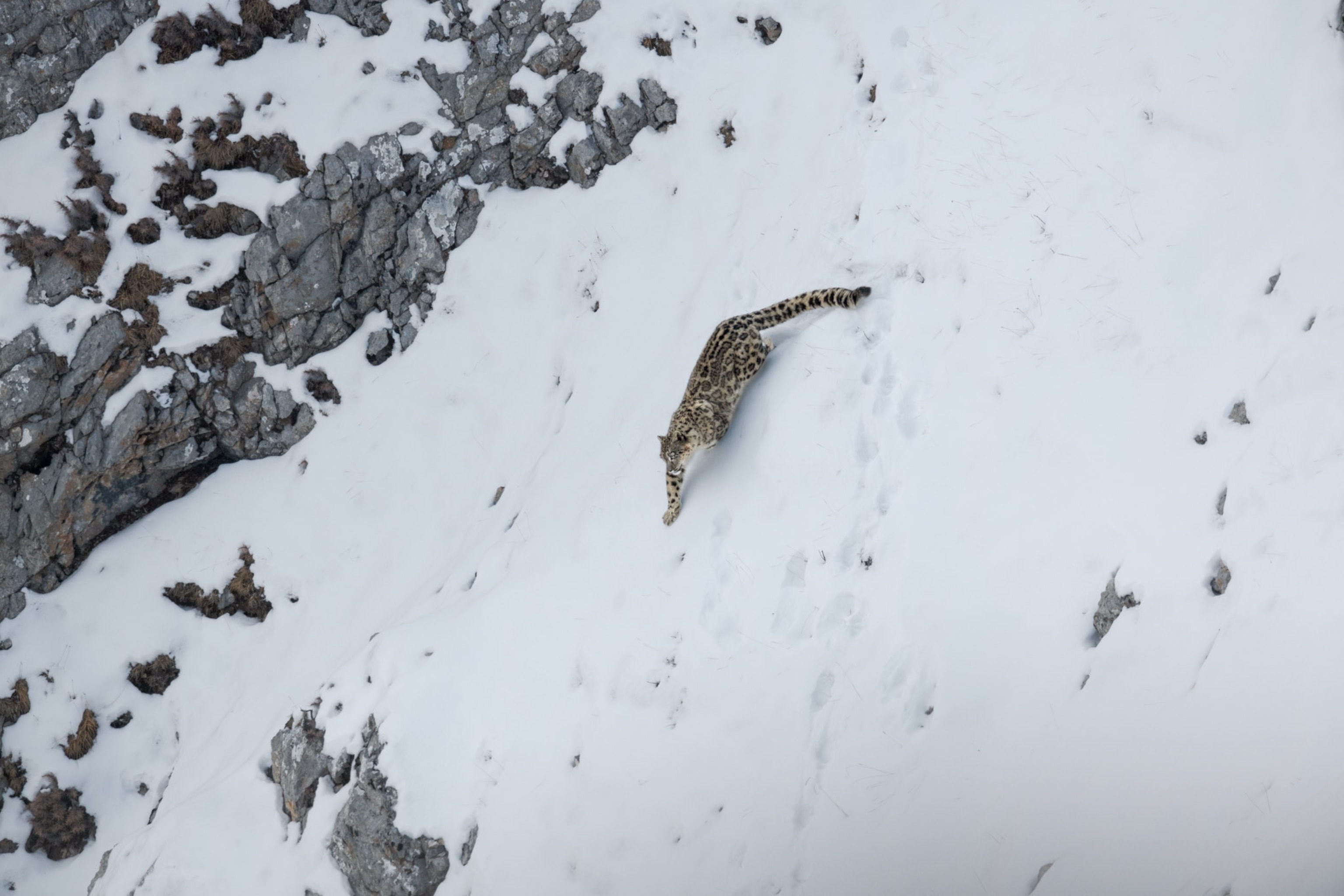
“Please, sit closer to the fire,” Tanzin Thinley urged me. The wind was snapping a string of frayed prayer flags outside the window, and we were huddled around the wood-burning stove in his living room.
His wife, Kunzung, fussed over me, bringing chai, a yak-hair blanket, and a pair of hand-knit wool socks because she was worried I wasn’t warm enough.
Thinley, known to everyone in the village by his last name, wore a battered down jacket, a baseball cap, and the unruffled calm of a man who has weathered 42 Himalayan winters. He was telling a story that, based on the look on his face, still surprised him: how people in Kibber went from reviling snow leopards to venerating them.
“It began with Charu,” he said.
In 1996 Charu Mishra, then a 25-year-old student from Delhi, first arrived in Kibber. It’s a small village consisting of a few dozen families who live in mud-and-timber houses clustered on a steep hillside overlooking the Spiti Valley. Once part of a Tibetan kingdom, the village for centuries has hosted a Buddhist temple, where monks mark each midday with chanting that echoes through the valley. The people of Kibber have tended livestock for generations, and like herders throughout the Himalaya, they regard snow leopards as grave threats to their livelihoods.

Charu’s plan was to study the impact domestic animals have on wildlife in the Spiti Valley. He rented a room and over two years spent his days surveying the high pastures. He also immersed himself in village life. The high school lacked a math teacher, so at night he taught math. When people fell ill, he drove them down the mountain to a clinic. He did chores, found lost animals, played in cricket matches, joined the youth club. “Parents told their children, ‘You can be like Charu,’ ” Thinley said. “I was in awe of him.”
After living in Kibber for a while, Charu asked the village elders to consider setting aside some mountain pastures for wild animals. They agreed, and without the competition from livestock, the number of blue sheep quadrupled. He then suggested some nonlethal ways to deal with the snow leopards that threatened their animals. But they politely declined, Thinley said. “They all respected Charu, but snow leopards were like a curse. No one had sympathy for them.”
Undeterred, Charu turned to the young people in Kibber and suggested the idea of a livestock insurance program. “We didn’t know what insurance was,” Thinley said. Charu explained that the participants would pay the equivalent of five dollars a year to insure their young yaks, worth roughly $340 when mature—against loss from a snow leopard. To prevent false claims, the owner would be asked to swear on the Dalai Lama’s photo that a snow leopard had made the kill.
“We weren’t sure this was going to work,” Thinley said. But at the end of the first year, four claims were paid. “The payments were made in front of the entire village,” he said. “When the elders saw this, they all joined.”
Since then, the insurance program—run by a board of local residents, including Thinley, and supported by India’s Nature Conservation Foundation (NCF) and the Snow Leopard Trust—has spread to other villages in the Spiti Valley.
Kibber is the place to see the cats with any predictability. But the journey is not for the faint of heart.
These efforts led to an increase in snow leopard sightings around Kibber and the arrival of the initial snow leopard tourists in 2015, the first year the road was open in winter. Last year, more than 200 tourists visited, spending approximately $100,000 in the village. Charu, who now heads the Snow Leopard Trust, is careful to credit the locals, with whom he remains in close touch. “I made some suggestions, and NCF put up some funding,” he told me when I met him at his office in Bangalore. “But the people in Kibber and the Spiti Valley are the ones who deserve the credit for the conservation successes there.”
The number of snow leopards in the Spiti Valley remains unknown. In fact, despite the determined efforts of Schaller and many other scientists, counting them is practically impossible.
Their range extends across 12 Central Asian nations, covering 800,000 square miles of some of the harshest environments for humans. Lung-starving altitudes, frostbite-inducing temperatures, rugged, barren terrain—much of it inaccessible—all limit the amount and quality of scientific fieldwork.
In recent years a research team in Mongolia managed to put satellite collars on 32 snow leopards and learned much about the cats’ movements in the Tost Mountains of the Gobi desert. For example, an adult male there requires roughly 80 square miles of territory—an area about three and a half times the size of Manhattan—while a female needs about 48 square miles.
But such figures can’t be applied across the vast, diverse snow leopard range. The amount of land a cat needs in the high desert is likely different from what it needs in, say, Siberia. The availability of prey, proximity to humans, and other factors may increase or reduce the range it needs. The Snow Leopard Trust estimates that 3,500 to 7,000 snow leopards are on the planet, but Charu acknowledged that’s just an educated guess. “We’ve been able to study 1.5 percent of snow leopard habitat. We can’t really say how many there are.”
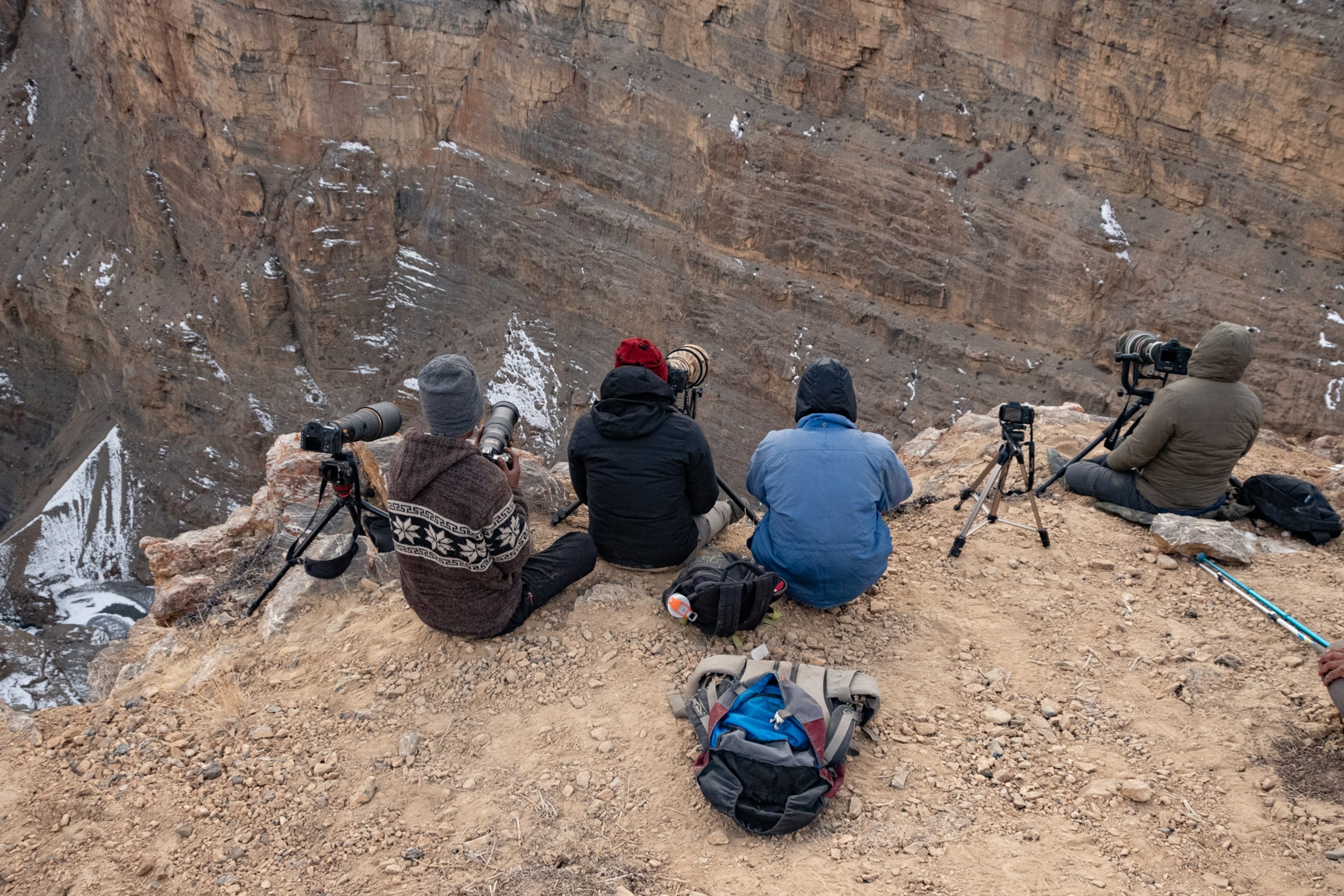
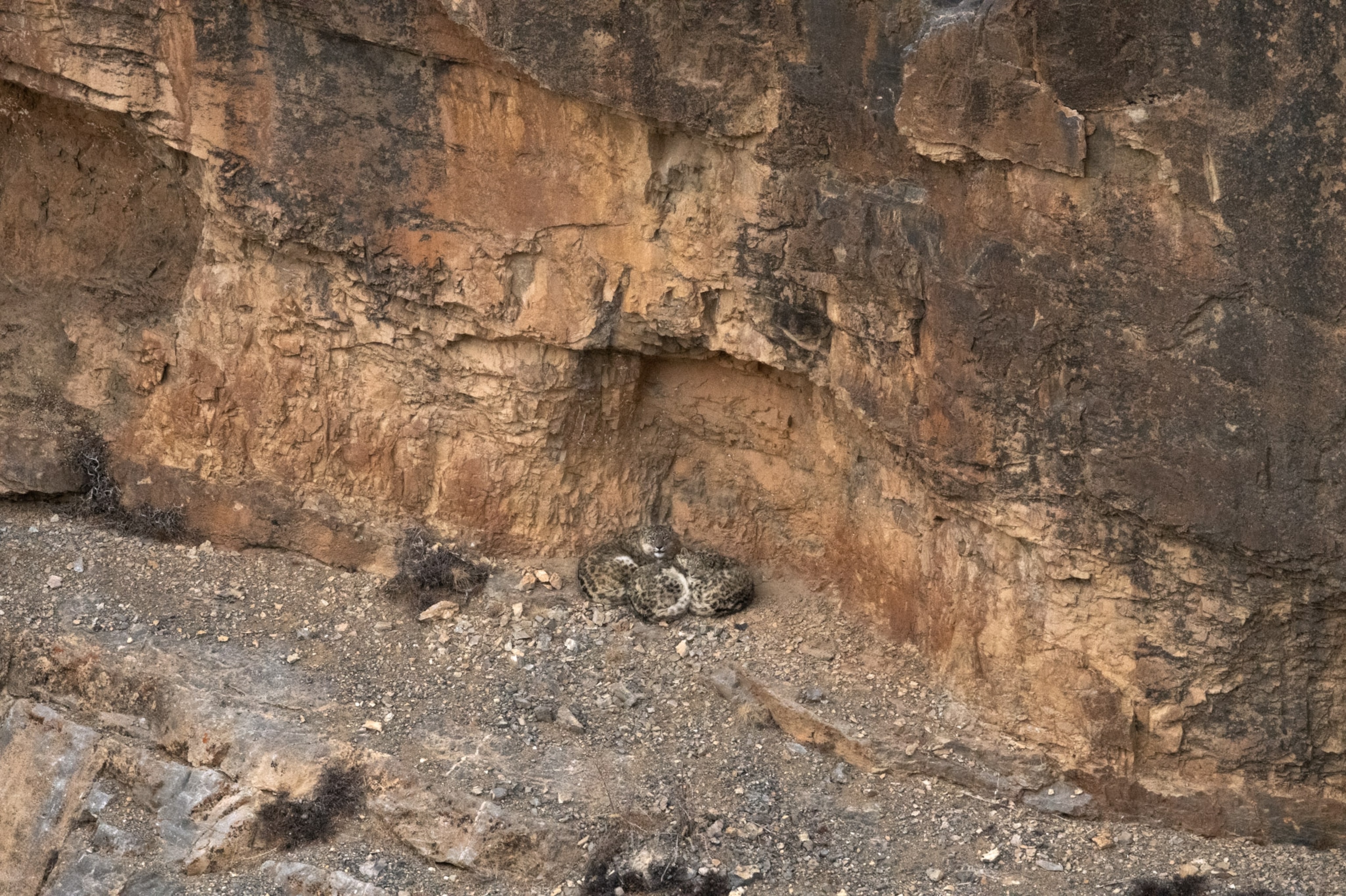
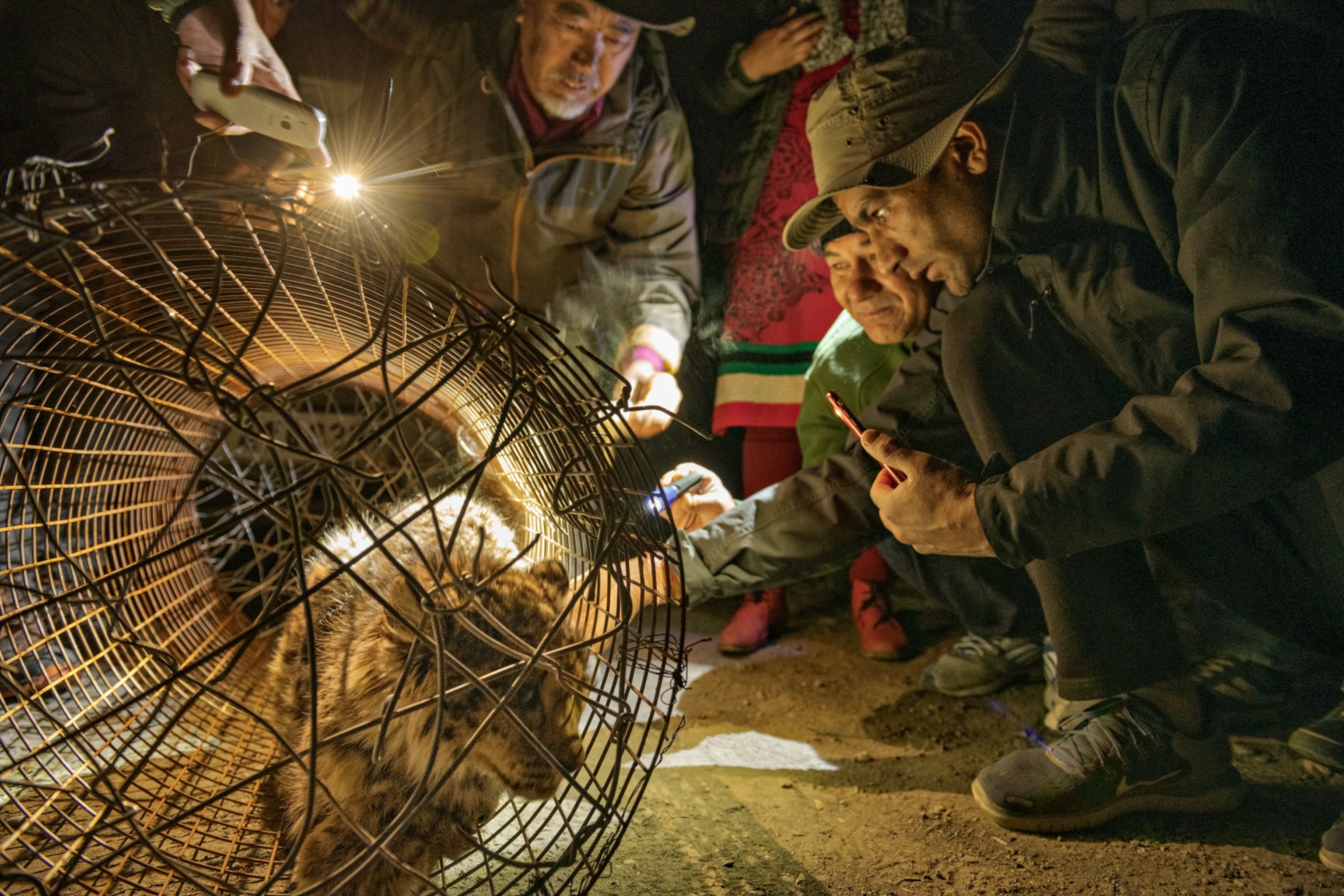
What is clear, Charu said, is that in many places where conservationists are studying snow leopards, the cats face mounting threats—poaching, mining that destroys their habitat, retaliation from herders, the disappearance of their prey. “The successes in Spiti and other places are gratifying,” he said. “But we need more of them.”
Prasenjeet and I hiked up a mountain pass in the early morning sun, which made the snowy landscape glitter like it was sown with diamonds.
Namgyal, a local guide who helps with the camera traps and goes by a single name, plowed ahead of us through a fresh mantle of thigh-deep snow. It was well below freezing, and I was wearing a wool T-shirt, a hoodie, a flannel shirt, and a wool sweater, all under a down jacket. I moved through the snow like a fat penguin. Namgyal, on the other hand, appeared to be wearing three layers at most, including a down jacket with a fraction of the feathers it once held. But he didn’t seem to notice the cold and advanced efficiently through the snow like, well, a snow leopard.
We were headed to some cliffs where Prasenjeet has set up three cameras, which he believes offer the best chance to capture a photo he’s been after all winter: a female with three cubs.
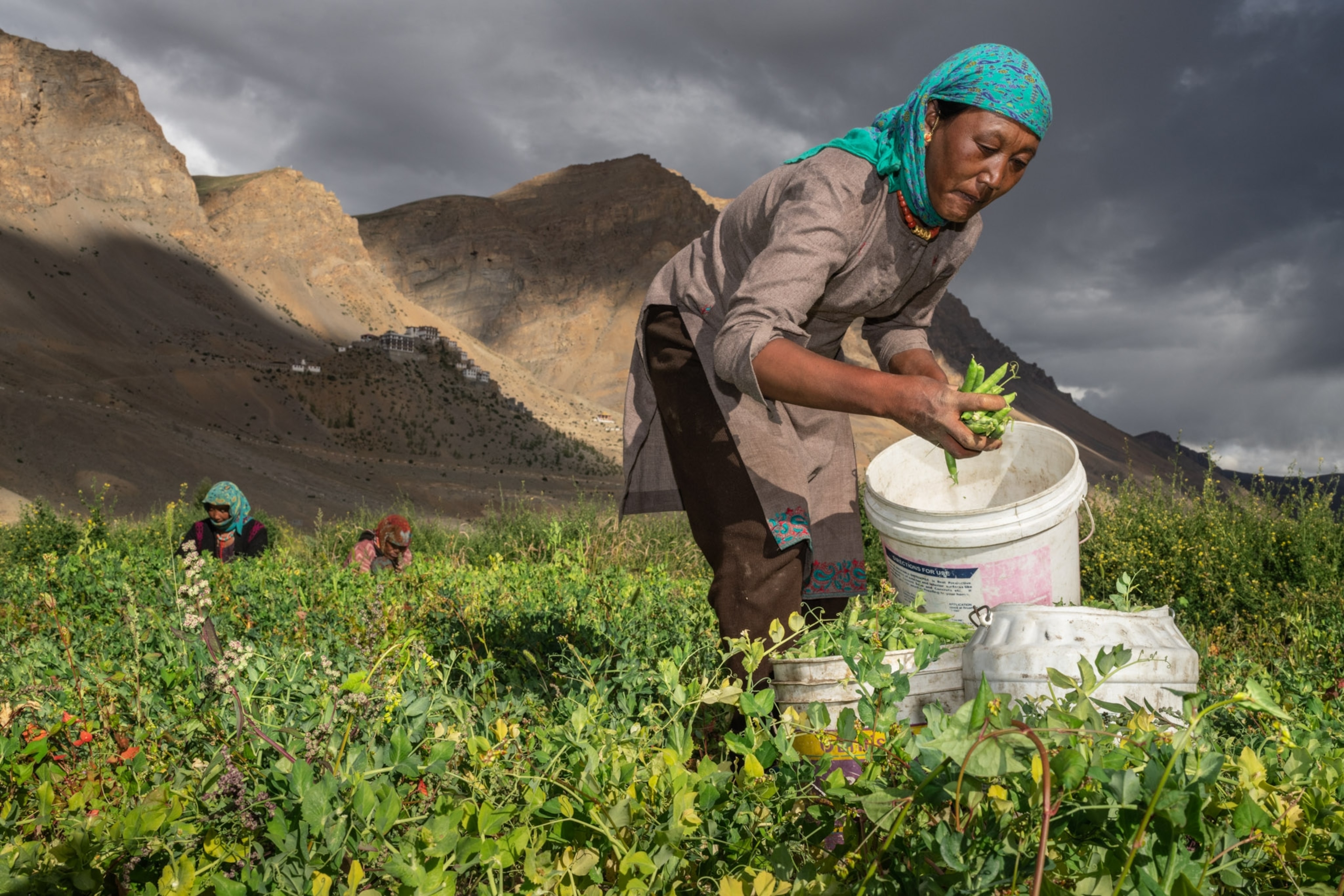
When it comes to India’s big cats, Prasenjeet, 31, has special insight. He grew up on a farm set among the jungles of India’s central plains, near Pench Tiger Reserve, one of the places said to have inspired the setting for Rudyard Kipling’s Jungle Book. He learned from a young age to recognize the pungent scent of common leopards and discern their shapes among the shadows of the forest. “We never named our dogs,” he told me. “Every six months a leopard would eat them.” In college, his friends would teasingly call him Mowgli.
When he arrived in Kibber in 2018, Prasenjeet spent long days exploring and patiently learning from the locals, much like Charu. Soon he began seeing the old male. He photographed him stalking ibex and blue sheep and observed him feed on his kills. He followed his tracks, examined his scat, found caves with his scent marks and fur. And thanks to a video camera trap, he’d stared into the leopard’s piercing, turquoise eyes.
In the spring of 2019 Namgyal saw the old male mating with a female on a high ledge. In late summer, she had given birth to three cubs, and ever since, Prasenjeet had been obsessed with getting intimate images of the mother and her offspring.
We crossed over the mountain, descended into the next valley, and ascended a ridgeline. From there we scrambled up a rocky band of ledges that offered wide views of the Spiti Valley. “This is like a snow leopard highway,” Prasenjeet said, explaining how the cats use the ledges to traverse between the high pastures where their prey come to graze. As if on cue, we saw the heads of several blue sheep peering down at us from atop the cliff.
Immediately, Namgyal found recent tracks, including a small one that might have been made by a cub. Prasenjeet located a fresh urine stain, where a cat had marked its territory. Snow leopards had wandered past all three cameras. But one by one, as Prasenjeet checked the memory cards, our hopes were dashed. One of the traps’ batteries had died—a regular problem in the extreme cold. Another’s flash had malfunctioned. The last had captured images, but only of an inquisitive fox and a flock of yellow-billed choughs.
Prasenjeet pulled off his fleece hat. Steam rose into the frigid air as he ran his fingers through his long, matted hair. I sensed how weeks of mind-numbing cold, arduous treks, and the uncertainty of the task had worn on him. He sighed. “The good news is we know the snow leopards are here.”
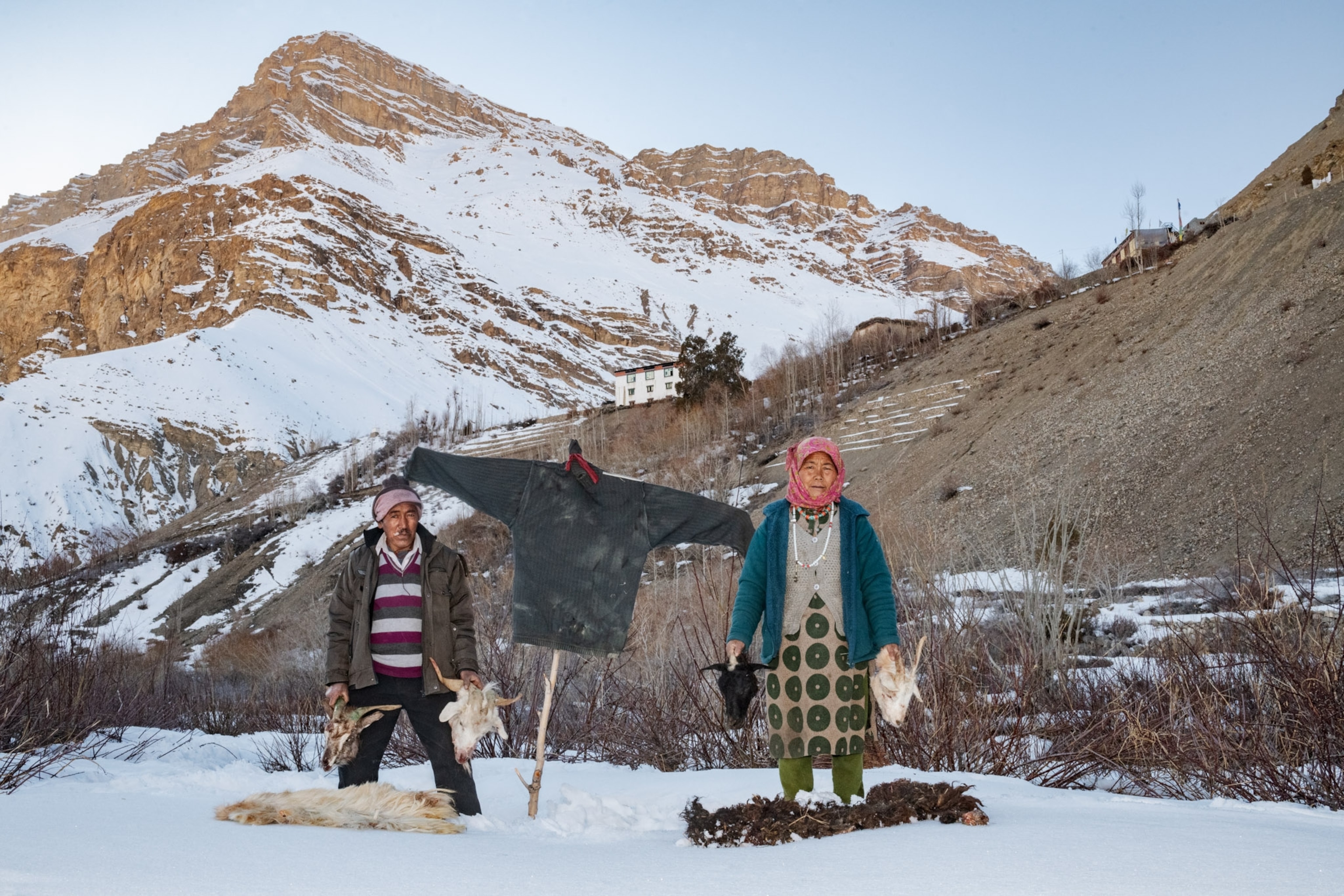
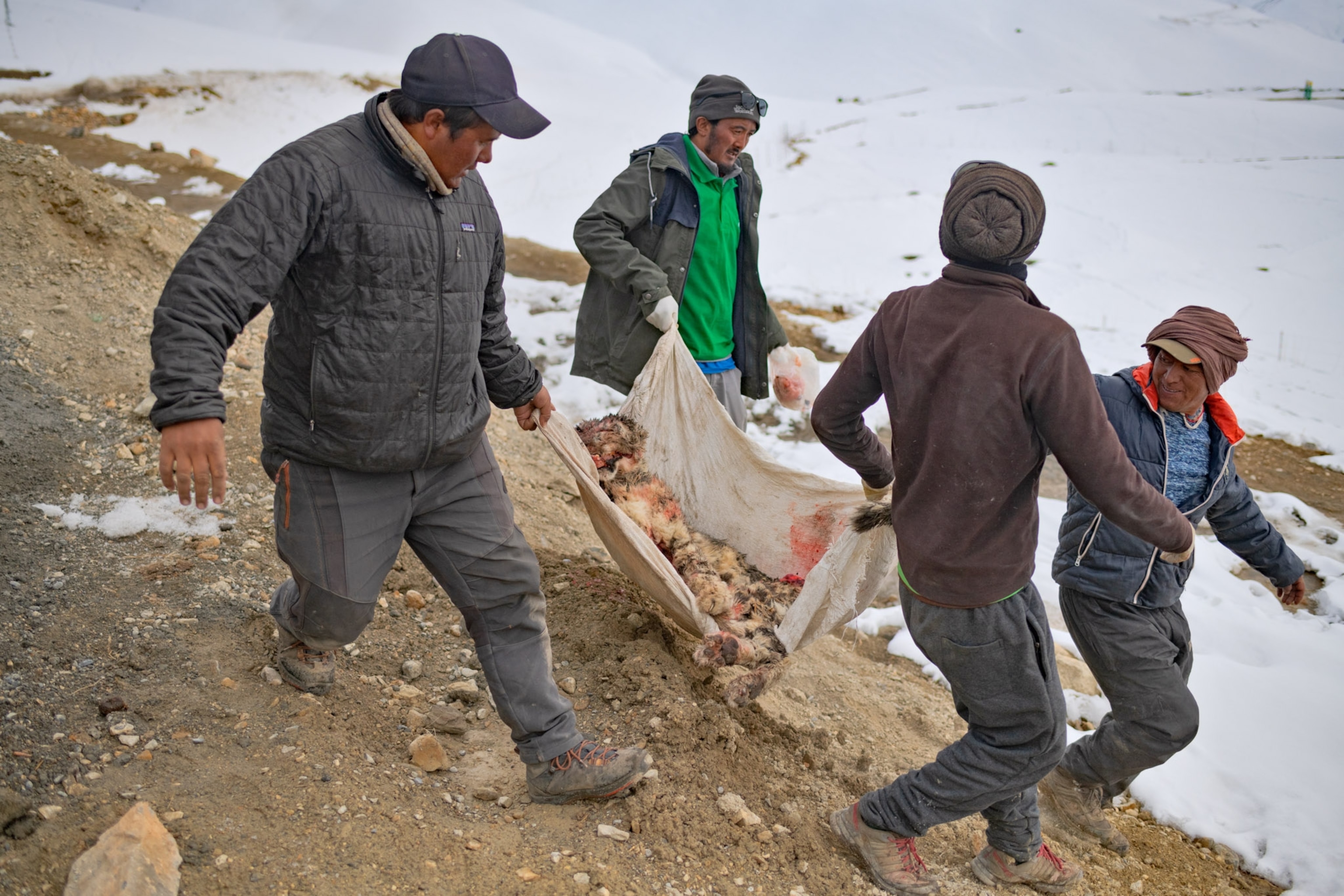
We got back to the village after sunset. It was snowing, and the electricity had gone out. When we saw Thinley, his eyes were wide with excitement: The old male had tried to take down the biggest ibex in the area, but during the chase the cat and its prey went over a cliff and hurtled several hundred feet into the Spiti River.
The next morning we found a crowd of tourists arrayed along the snow-draped edge of one of the deepest parts of the gorge.
Namgyal handed me a pair of binoculars, and there, some thousand feet below, lying in the icy Spiti River, was the carcass of a large male ibex. The current splashed around its body and massive horns.
A guide who saw the kill described how the snow leopard had chased the ibex down the cliff, leaping back and forth between ledges. The cat lunged for the ibex’s throat, and they both tumbled out of view. “I heard them crashing, and then I saw them in the river,” he said.
Both animals survived the fall, and the ibex had thrashed in the icy water and nearly escaped. But the snow leopard managed to bite the animal’s muzzle and hold it underwater until it died.
The ibex was a large male—perhaps 250 pounds, compared with the snow leopard’s 80—from a herd often seen near Kibber. “We always see him,” Namgyal said. “He had lost his fear.”
As the old male leopard tried to take down the area’s biggest ibex, they hurtled off a cliff, falling hundreds of feet into a gorge.
The carcass was too heavy to pull out of the river, so the snow leopard, trying to stay dry, crouched on top of it and began stripping meat off the rib cage as the sun fell behind the mountains.
The guides knew the cat would feed on the kill for days, so they roused their clients early to claim the best vantage spots from which to take photos. Several set up camping chairs on packed snow perilously close to the edge. “If one person slips, he could knock them all off,” Prasenjeet muttered.
The cat had returned to the ibex briefly at first light but suddenly retreated into the rocks out of sight. Some of the guides said he seemed to be limping. Hours passed as we waited for his return. Tourists mingled, guides brought food from the village, thermoses of chai were shared. A bearded vulture floated overhead. Namgyal pointed out a fox scurrying among the rocks.
Late in the afternoon, we learned that the forestry department had caught a tourist who’d sneaked down into the gorge to film the cat without a permit. “That’s probably why the cat hasn’t come to feed,” Prasenjeet said. “It was spooked.”
With the sun about to set, most of the tourists returned to the village. Prasenjeet, Namgyal, and I were about to pack up when a guide pointed to the carcass excitedly: The cat was back on the kill.
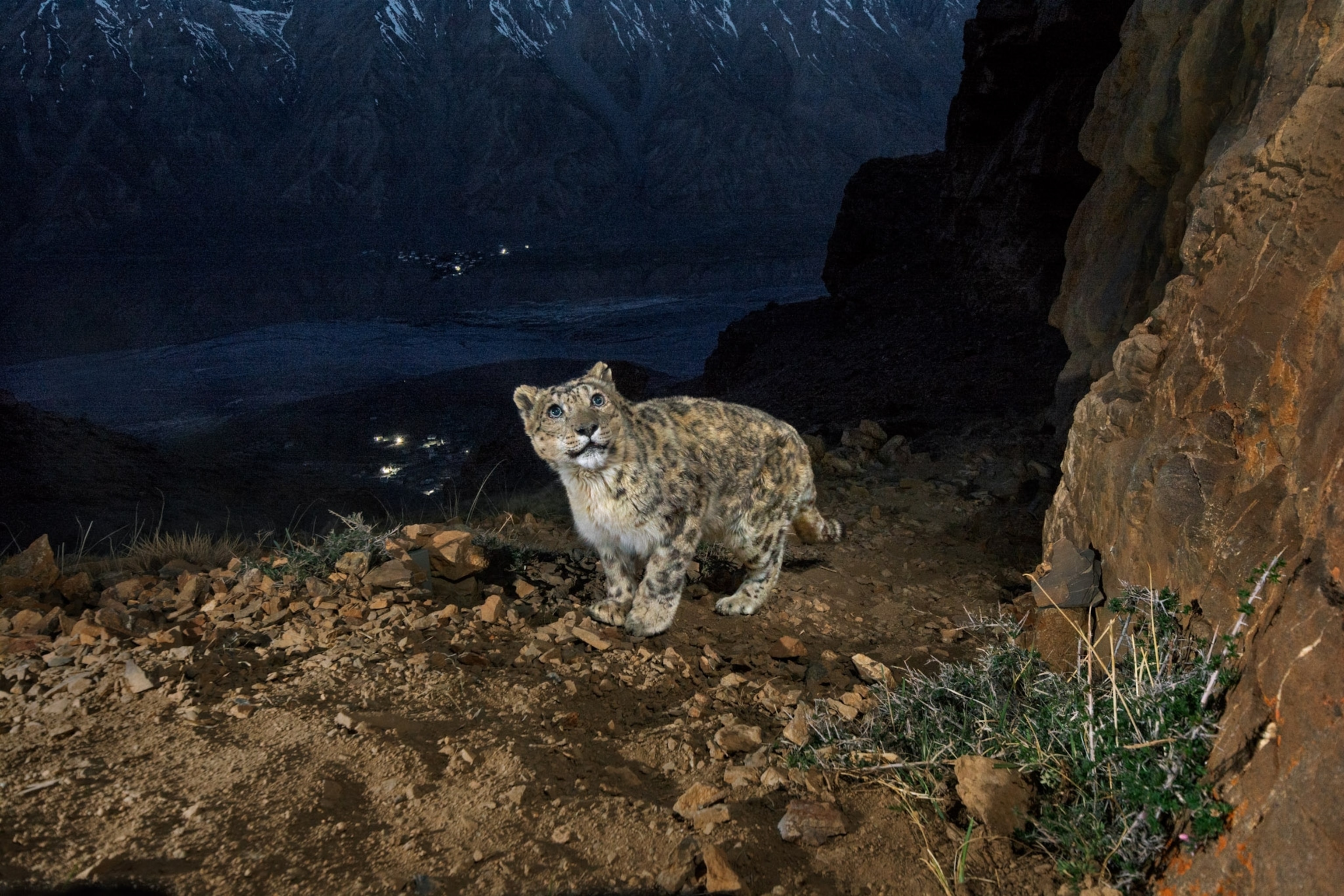
For a few minutes, just before shadows enveloped the gorge, I watched through binoculars as the old male stood on the dead ibex. He tore at it hungrily. At one point he looked up, as though he sensed he was being watched. I know it’s unscientific to anthropomorphize, but I couldn’t help but imagine his satisfaction: Think I’m too old to hunt? I just took down the biggest ibex in the valley.
A week after I left India, Prasenjeet called me. He’d traveled down the valley to get a cell signal because he wanted me to know the old male had died. A guide had seen him chase another ibex and then disappear off a cliff. This time he didn’t survive. Namgyal helped the forestry department recover the body. Prasenjeet’s voice was heavy as he described watching the necropsy. “Its spine was broken,” he said. “It was also malnourished, probably starving.” He guessed that the cat hadn’t eaten enough of the big ibex before the meat froze, forcing him to hunt again.
People from the village came to see the snow leopard cremated. A storm had swept through the valley, dumping heavy snow and signaling spring was still weeks away. They warmed their hands over the pyre. The old male had been a favorite, especially among the guides, because he’d been relatively easy to find. This year every tourist who came to Kibber saw a snow leopard. But in the days after the old male died, no one saw one. Still, the female and her cubs were somewhere, and Prasenjeet planned to find them.




